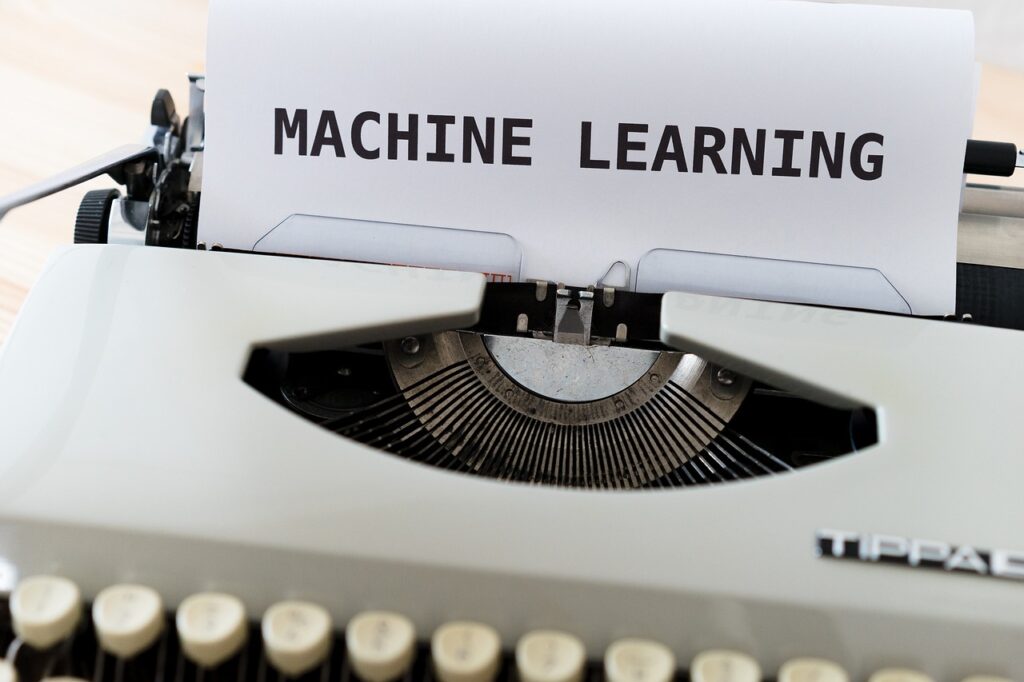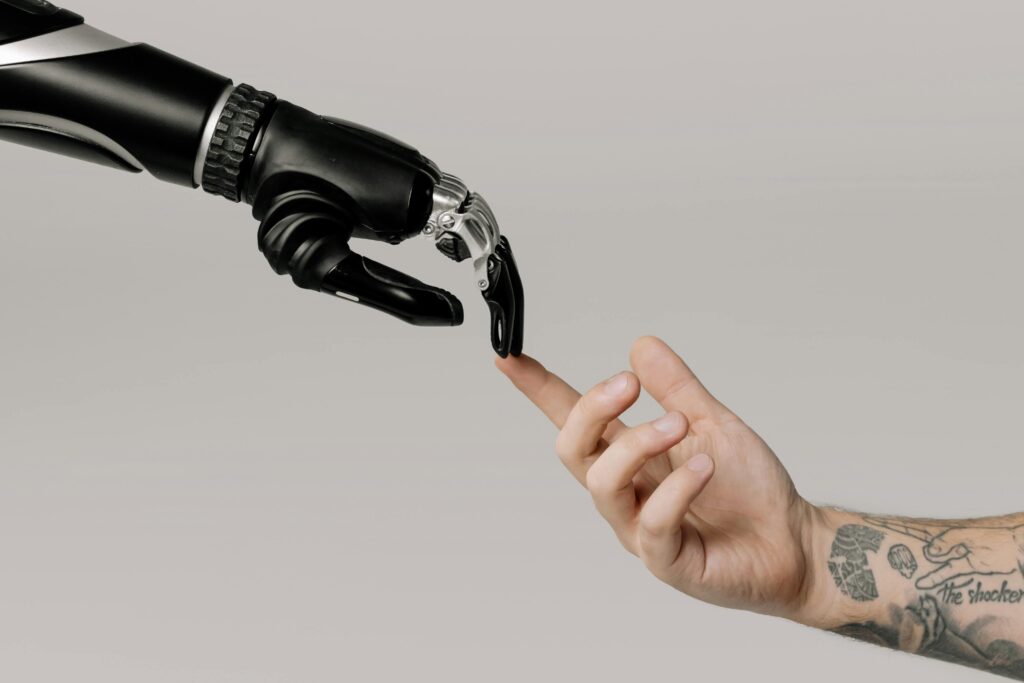
Machine learning models can seem overwhelming, but with a basic understanding, even non-techies can grasp how these models work and where they’re used. This guide breaks down the main types—supervised, unsupervised, and reinforcement learning—explaining each in simple terms.
By the end, you’ll know how these models help power the technology around us, from recommendation systems to customer service automation, making the complex world of machine learning easy to understand.
What is a Machine Learning Model?
Machine learning models are like algorithms designed to recognize patterns in data. Just as you can recognize someone’s face in a crowd after learning their features, ML models can “learn” from examples to make predictions.
But while they might seem magical, they are essentially advanced pattern recognizers at their core.
They learn from data. By being fed examples, they gradually improve at tasks, whether that’s identifying spam in an inbox or recognizing objects in photos.
How Do Machine Learning Models Work?
Machine learning models learn from examples, a bit like how humans do. Imagine you’re learning to recognize types of animals. You’d first look at many photos labeled as “cat,” “dog,” or “bird,” and over time, you’d start noticing patterns—like fur, size, or shape. Machine learning models go through a similar process.
- Data Gathering and Preparation – Models first need examples to learn from. This data is prepared by cleaning and organizing it so the model can focus on the important details.
- Training and Learning Patterns – In the training phase, models use algorithms to analyze the data and identify patterns. For instance, if you train a model with photos of cats and dogs, it’ll start to recognize the differences based on patterns, like fur type or facial shape.
- Testing and Adjusting – After training, models are tested with new data to see how well they perform. If they make mistakes, they’re adjusted, improving accuracy with each cycle.
- Making Predictions – Once trained, a model can make predictions on new data. For example, a recommendation model might suggest movies by comparing what you like with patterns from other users.
Each model learns differently depending on the task. Supervised learning models learn with “answers,” unsupervised models find their own patterns, and reinforcement models learn through trial and error.
This process is what lets models analyze huge amounts of data quickly, making them useful for real-world applications like detecting spam, recognizing images, or even driving autonomous cars.
Why are there different types of Learning models?
There are different types of learning models in machine learning because each type serves a unique purpose based on the data and task. Supervised models are used when labeled data is available to train with specific outcomes, while unsupervised models work without labeled data to uncover patterns.
Reinforcement learning models learn through rewards and penalties, which is ideal for decision-making scenarios. This diversity allows machine learning to adapt effectively across applications, from predictions and classifications to clustering and optimization. Let’s take a deeper dive into some of the models.
Supervised Learning Models
Supervised learning models are trained using labeled data, meaning the data comes with answers or outcomes. Think of it like a teacher guiding a student by showing them correct answers.
What are common types of supervised models?
- Regression Models: Used for predicting continuous values (like house prices).
- Classification Models: Used to categorize data (like identifying spam emails).
Supervised learning is great for scenarios with clear examples and outcomes. Companies use it to predict customer behavior, classify emails, and detect fraud.
Unsupervised Learning Models
Unlike supervised models, unsupervised learning doesn’t rely on labeled data. Instead, it finds patterns or groupings within data on its own, without needing specific answers to guide it.
What are common types of unsupervised models?
- Clustering Models: Group data into clusters or segments, useful for market segmentation.
- Association Models: Discover relationships in data, like which items are often bought together in a store.
These models are perfect for organizing unstructured data, such as segmenting customers or recommending products based on behavior patterns.
Semi-Supervised Learning Models
Semi-supervised learning combines both labeled and unlabeled data. Imagine a tutor who gives you some answers but encourages you to figure out the rest on your own.
By learning from a smaller set of labeled data and applying that knowledge to larger unlabeled data, these models achieve a middle ground.
Semi-supervised models are often applied in image recognition, where labeling every photo would be costly and time-consuming. It’s a great method for tasks requiring a lot of data but limited labeled information.
Reinforcement Learning Models
Reinforcement learning models learn by trial and error, receiving rewards or penalties based on their actions. Think of it as training a pet; they’re rewarded for good behavior and corrected for bad behavior.
What are examples of reinforcement learning?
- Game AI: AI that learns to play games by improving over time.
- Robotics: Robots learn to perform tasks, like picking up objects, by being rewarded for successful actions.
It’s used in robotics, automated driving, and even some financial trading algorithms where models learn optimal strategies over time.
Neural Networks and Deep Learning Models
Inspired by the human brain, neural networks and deep learning models consist of interconnected layers of “neurons” that can process and analyze vast amounts of data. These models power many of the advanced AI applications we hear about today.
Deep learning is a subset of neural networks, usually involving many layers, that excels in handling large, complex data, such as images and natural language.
They are commonly used in image recognition, language translation, and even in virtual assistants like Siri and Alexa, helping these applications understand and respond accurately.
Decision Trees and Random Forests
A decision tree model splits data into branches, creating “decisions” at each level based on specific features. Random forests are an extension, combining multiple decision trees for more accurate results.
They’re easy to understand and interpret, making them great for non-technical applications, like figuring out factors leading to customer churn.
These models are widely used for tasks like loan approval, customer segmentation, and fraud detection due to their interpretability and reliability.
K-Nearest Neighbors (KNN)
The K-Nearest Neighbors model makes predictions based on the “neighbors” of a data point. It compares new data to similar examples in the dataset to make decisions.
This model works well for recommendation systems, like suggesting movies or books based on what similar users enjoyed. It’s also useful in healthcare for diagnosing conditions based on similar patient symptoms and for classifying images.
Support Vector Machines (SVM)
Support Vector Machines separate data into categories by finding the best line or boundary that divides the data. They’re especially useful in classification tasks with high-dimensional data.
SVMs are effective in image and text classification, including spam detection, facial recognition, and handwriting analysis. When you have complex data and a need for high accuracy, SVMs are powerful and highly reliable, though they can be more challenging to interpret.
Naïve Bayes Classifiers
Based on probability, Naïve Bayes Classifiers use the principle of conditional probability to classify data, assuming features are independent of each other. Despite this simplicity, they are remarkably effective.
Commonly used in spam filtering and sentiment analysis, they’re great for categorizing emails, texts, and reviews. Even though they assume feature independence, which is rarely true in real data, they often perform surprisingly well and are computationally efficient.
Conclusion
Machine learning models may seem complex, but they’re simply tools designed to find patterns in data and make decisions. Each model has unique strengths, from analyzing customer preferences to identifying objects in photos.
As ML technology advances, these models will become even more integral to our lives, shaping everything from how we shop to how we receive medical care.
Understanding these basics gives you a foundation to see the impact of machine learning in everyday applications—and perhaps even inspires you to learn more about this transformative field.

